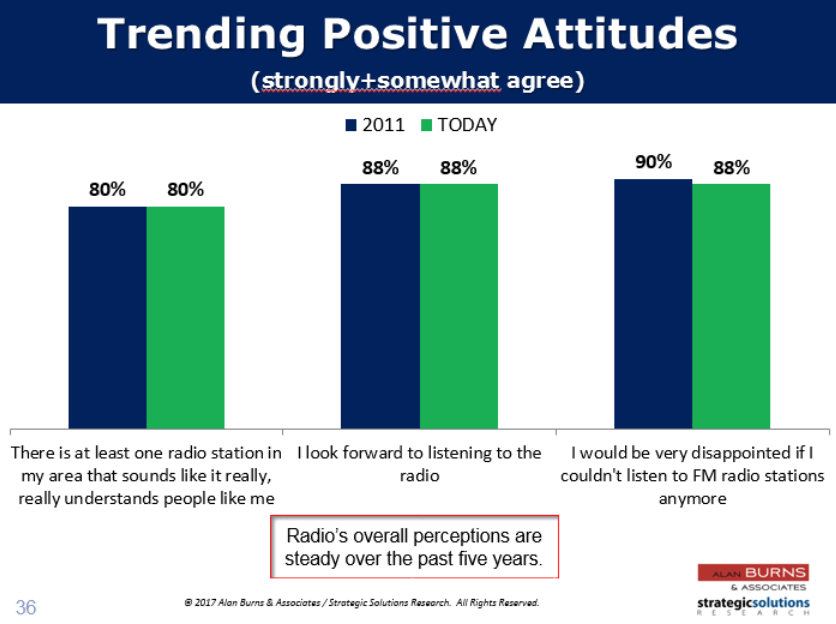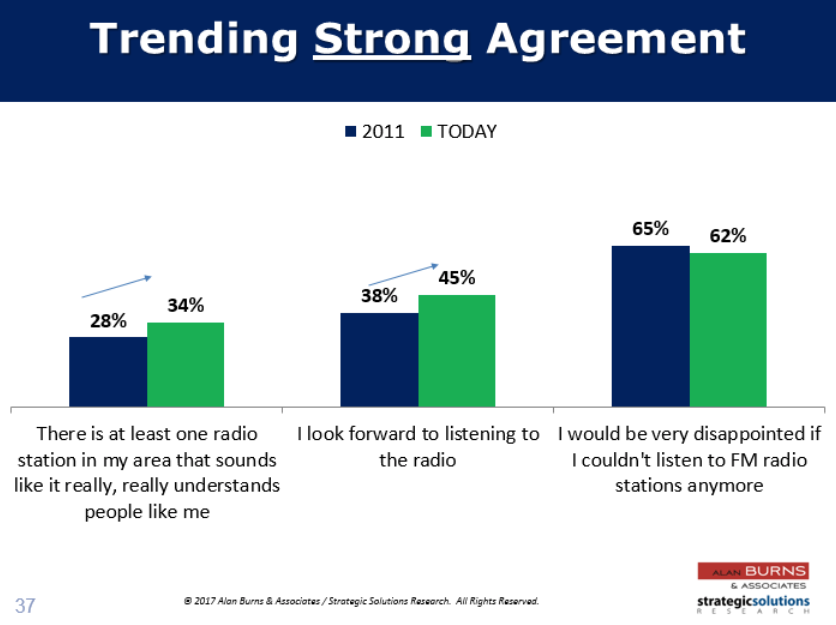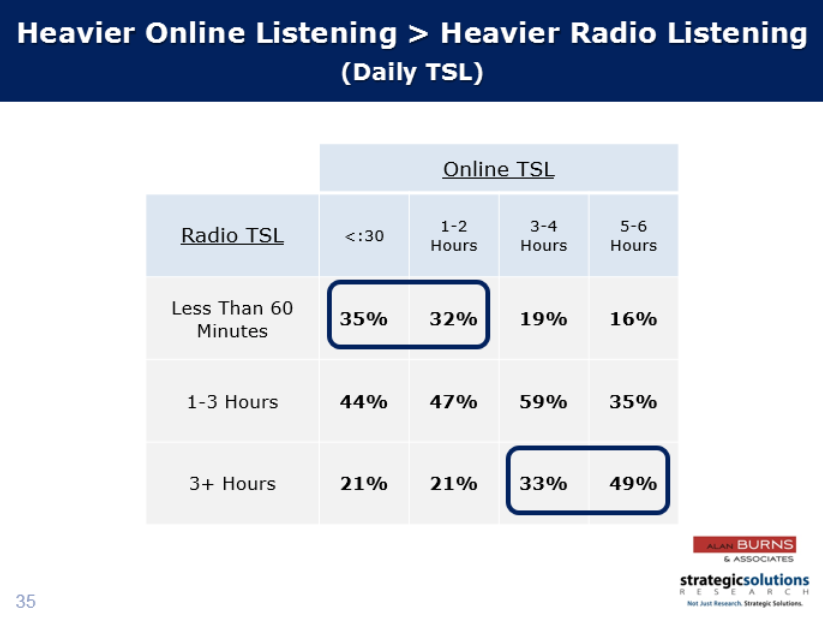We are elated at the radio industry buzz that has been created by our “What Women Want” study that we’ve conducted in conjunction with Alan Burns & Associates. Perhaps part of the reason for the buzz is that many of our findings validate what a lot of broadcasters have felt in their gut – that listeners still love their favorite radio station, despite the vast number of audio choices now available to them.
There was so much data presented in the webinars that we’ll be detailing some of those findings in our email newsletter and blog, and we’ll share additional thoughts on what it all means and how Radio can put the findings to good use.
When we started this project with Alan Burns last fall, we frankly didn’t know what to expect. Looking at the press that Radio has received, one would think that Radio has been in steep decline and is irrelevant to consumers these days.
Our study did not find that at all. Many of our findings debunk some misperceptions. That’s not to say there are not important issues for Radio to deal with because there are, but Radio has fared very well in the face of an onslaught of audio choices.
Here are a few perceptions about the health of the radio business that What Women Want has debunked:
Myth: The reach of radio is in sharp decline
Reality: Our study with Alan Burns shows that 9 out of 10 women use Radio every week.
Myth: Radio doesn’t connect with a lot of people anymore.
Reality: Nine out of 10 agree that “I would be very disappointed if I couldn’t listen to FM radio stations anymore.” Positive attitudes toward radio are consistent with the study of women 5 years ago:

In fact, radio is engaging some listeners more than five years ago:

There is an immense amount of data showing Radio’s high level of engagement. Here are three more:
- More than 3 out of 4 women feel her favorite radio station is like a “friend” or even “best friend.” (and that is UP from 5 years ago)
- More women feel their favorite radio station “understands” them more than their significant other!
- Women love their favorite radio station slightly less than their mobile phone, as much as Netflix and Amazon, and much more than Pandora, Spotify and Apple Music. Radio does better than those other audio choices even among 15-24s.
Myth: Women are listening more to pureplay music services and as a result, less to radio.
Reality: If you are a heavy user of those online services like Pandora or Spotify, you’re also a heavy user of AM/FM radio.

Myth: All women care about is “don’t talk and play another song.”
Reality: While playing a lot of music IS important and playing her favorite song is critical, broadcasters need to remember the things Radio can uniquely provide that are also big drivers of usage:
- Mood Service: After “hearing a favorite song,” the top driver of usage to radio is the ability to switch from one radio station to the next for mood. Listeners use radio as an escape. Listeners in LA can switch from KIIS to KOST to My FM and receive a completely different vibe.
- Personalities and Fun: What happens between songs creates a unique environment. Listeners feel connected to their favorite radio station and value the fun and laughs between the music.
Myth: Listener perceptions don’t matter; in a PPM world, only behavior matters.
Reality: Simply put, perceptions lead to behavior. There are numerous data points in the study showing that the more positive a women feels about radio, the more listening she is going to give to it. Heavy users to radio have at least one radio station they really connect with. (“There is at least one radio station in my area that sounds like it really knows me.”)
We’d love to thank Alan, Jeff and Kelly Milowe at Alan Burns & Associates; they have been great partners on this study. We’d also like to thank Michael at Hooks Unlimited, who kindly produced the audio hooks that we played to respondents in the study.
